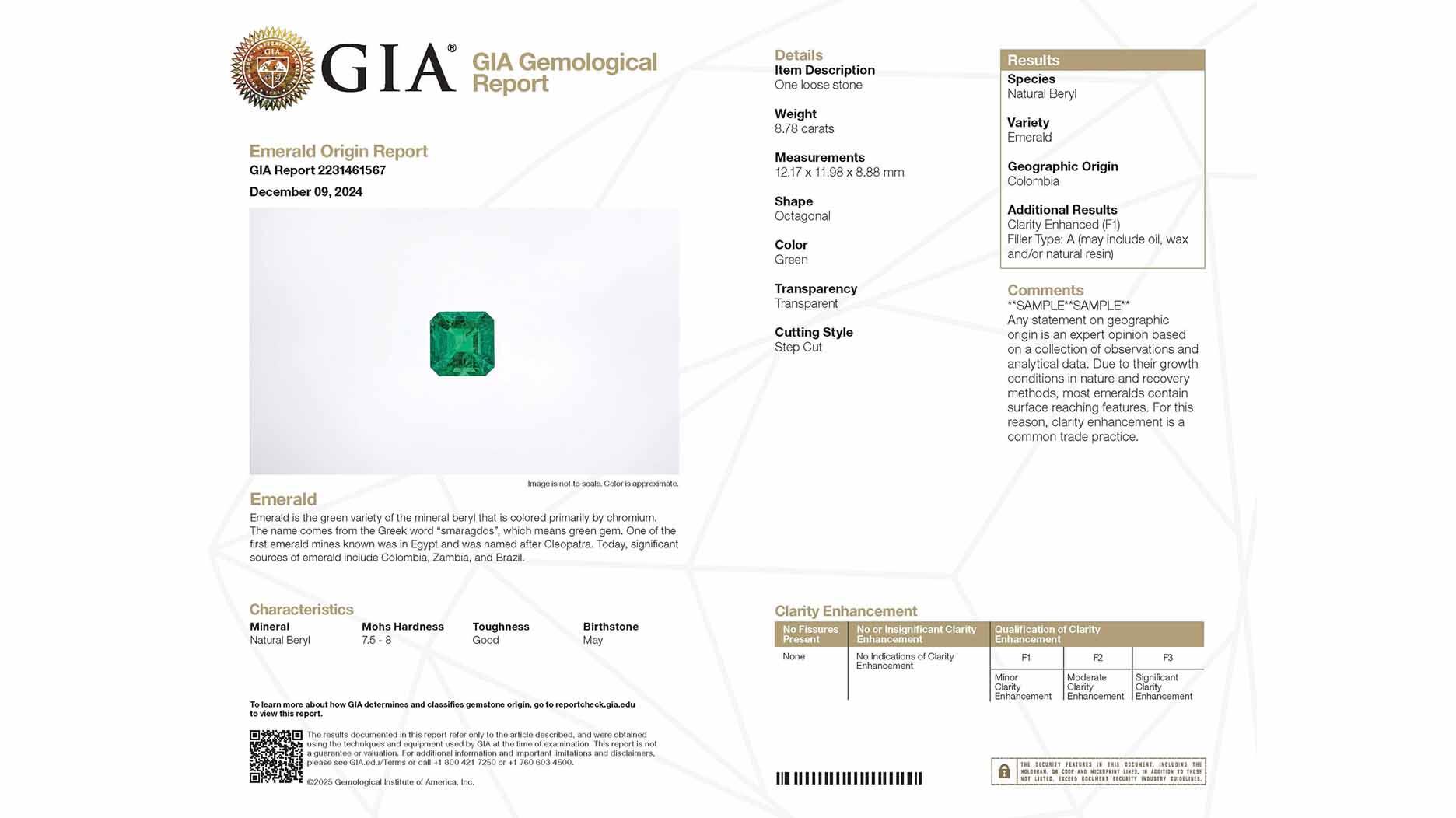Set in a Tiffany & Co. necklace, it sold for $4.2 million, the highest price and price per carat paid for a Paraíba tourmaline at auction.
NY lab reports finding more undisclosed synthetics
The Analytical Gemology & Jewelry Laboratory (AG&J), the same lab that reported the discovery of a parcel of 243 undisclosed lab-grown yellow melee diamonds, is warning the industry that it recently found synthetic brown melee mixed in a batch submitted as natural.
New York--The Analytical Gemology & Jewelry Laboratory (AG&J), the same lab that reported the discovery of a parcel of 243 undisclosed lab-grown yellow melee diamonds, is warning the industry that it recently found synthetic brown melee mixed in a batch submitted as natural.
The New York-based laboratory said Friday that the stones were grown using the chemical vapor deposition process (CVD) but were sold as natural brown type IIa diamonds.
The lab said at the end of July, it graded a batch of 18 diamonds, 17 rounds and one marquise cut, totaling 16 carats and ranging in size from 0.14-0.635 mm, with color ranging from F to gray and clarity of VVS to SI. The diamonds purportedly were mined, HPHT-treated diamonds.
Using its proprietary testing system, which can test melee, AG&J found that 13 of the 18 stones, or 72 percent, were actually CVD-grown diamonds.
An American gem dealer who specializes in HPHT-treated diamonds submitted the stones after purchasing what he believed were mined diamonds from a trade source with whom he had a long-standing relationship, the lab said.
The dealer bought the stones in question on the open market in Mumbai as type IIa brown diamonds. The dealer used a portable FTIR instrument to test the stones to ensure they were type IIa or very low nitrogen stones that could be HPHT treated.
The client became suspicious when some of the diamonds turned gray during the HPHT treatment and none of the stones achieved a color grade higher than I.
AG&J said testing revealed the CVD diamonds were produced using different parameters and reactors, which means they came from different factories.
“It was not surprising that the client could not detect the CVD diamonds using FTIR spectroscopy, as this requires more sophisticated methods that also have to keep up with the changes in the production of CVD- and HPHT-grown stones as well as treatments,” said AG&J CEO Dusan Simic.
He added that the discovery of these stones shows that the production of CVD-grown diamonds has become so cheap that they are beginning to penetrate the low end of the market.
The failure of companies to disclose the submission of lab-grown diamonds has increased in tandem with the stones’ presence in the industry, which comes as no surprise to the leaders of the world’s largest gem-grading laboratories.
As Jerry Ehrenwald, president and CEO of IGI North
The biggest non-disclosure scandal took place in the spring of 2012, when the International Gemological Institute in Antwerp reported finding hundreds of undisclosed synthetics.
Though Gemesis was the company linked to these stones, no one was ever punished in the scandal.
Simic said Friday that based on his lab’s research and database, along with reports from other researchers, he is “99 percent sure” the 13 undisclosed synthetics just discovered were not grown by Gemesis.
In June 2012, the Gemological Institute of America reported that 10 undisclosed synthetic diamonds surfaced at its Hong Kong lab. The AG&J found the 200-plus undisclosed yellow melee diamonds in January.
The Latest

The jeweler’s “Deep Freeze” display showcases its iconic jewelry designs frozen in a vintage icebox.

Take luxury gifting to new heights this holiday season with the jeweler’s showstopping 12-carat sphene ring.

How Jewelers of America’s 20 Under 40 are leading to ensure a brighter future for the jewelry industry.

This year's theme is “Unveiling the Depths of the Ocean.”


In its annual report, Pinterest noted an increase in searches for brooches, heirloom jewelry, and ‘80s luxury.

The 111-year-old retailer celebrated the opening of its new location in Salem, New Hampshire, which is its third store in the state.

Roseco’s 704-page catalog showcases new lab-grown diamonds, findings, tools & more—available in print or interactive digital editions.

The new catalog features its most popular chains as well as new styles.

The filmmaker’s personal F.P. Journe “FFC” prototype was the star of Phillips’ recent record-setting watch auction in New York.

The new location in the Design District pays homage to Miami’s Art Deco heritage and its connection to the ocean.

Inflations, tariffs, and politics—including the government shutdown—were among consumers’ top concerns last month.

“Longtime favorite” presenters, as well as first-time speakers, will lead talks and workshops at the annual event in Tucson next year.

Silas Smith of Meridian Metalworks won the challenge with his pendant that blends Australian and American landscapes.

The sale of the 31.68-carat, sunset-hued stone was part of Sotheby’s first series of events and auctions in Abu Dhabi.

Most customers who walk into your store this month have made up their minds. Your job is to validate their choice, Emmanuel Raheb writes.

The collection features characters and motifs from Ukrainian folklore, including an enchanted mirror and a magic egg.

MatrixGold 3.11, the newest version of the jewelry design program, offers more flexibility, precision, and creative control.

The pavilion will be part of the 2026 JA New York Spring show, scheduled for March 15 to 17.

Kadet, a 1994 National Jeweler Retailer Hall of Fame inductee, helped grow the family-owned retailer in the Chicago area and beyond.

Billed as the world’s smallest wearable, Lumia Health’s new smart earrings have a health tracker subtly embedded in the back.

Don’t let those with December birthdays feel blue. Help them celebrate their month with blue zircon, turquoise, and tanzanite.

The new pink sapphire version of the piece dances with its wearer in the brand’s “Icons After Dark” holiday campaign.

A choice that’s generated a lot of commentary, Pantone says “Cloud Dancer” marks a fresh start and encourages relaxation and creativity.

The manufacturer’s holiday campaign features a gift guide filled with trending designs and jewelry that can be personalized.

The man was charged with theft, accused of ingesting the necklace while in a jewelry store in Auckland, New Zealand.

The Florida independent expanded its store from 8,000 to 14,000 square feet, fulfilling the vision of its late co-founder, Jim Dunn.



























